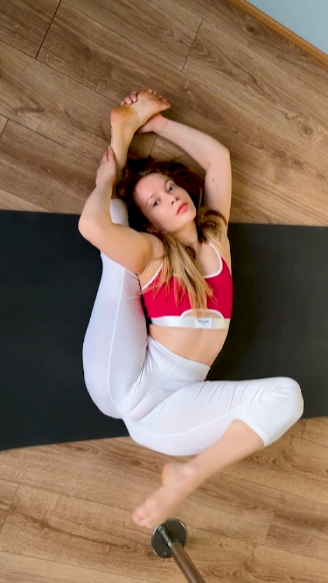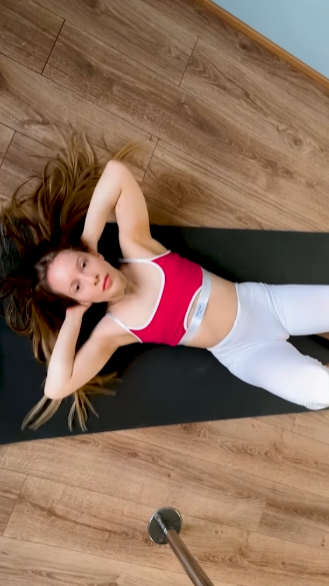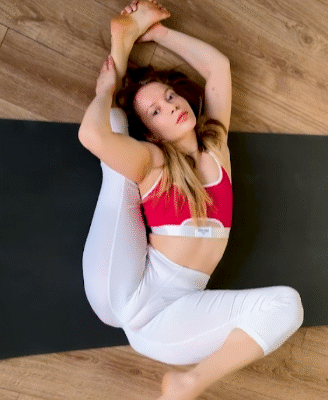
In today’s world, more and more women are stepping into gyms with confidence, determination, and a clear vision of achieving strong, healthy, and athletic bodies. The stereotype that gyms are only for men or that women should stick to lightweight training is fading away. Women’s athletics and full-body gym workouts are reshaping the way fitness is approached, focusing on building strength, endurance, flexibility, and overall health. A full-body gym program designed for women not only enhances physical performance but also boosts mental well-being and self-confidence.
This article dives into the importance of women’s athletics, the structure of a full-body gym workout, and how consistent training can empower women to achieve their fitness goals.
Why Women’s Athletics Matters
Athletics has always been a foundation of physical culture, and women have proven their strength and resilience in every sporting field, from sprinting to weightlifting. But beyond competitive sports, women’s athletics in the gym plays a vital role in health and lifestyle.
- Physical Health Benefits
Full-body gym training helps women build lean muscle, increase bone density, improve cardiovascular health, and manage weight. Resistance training is particularly effective in reducing the risk of osteoporosis, which affects women more often than men as they age. - Mental Strength
Training in athletics is not just about building muscles but also mental discipline. Exercise releases endorphins, improving mood, reducing stress, and enhancing focus. A full-body program challenges both mind and body, teaching persistence and resilience. - Confidence and Empowerment
Every set completed, every weight lifted, and every mile run adds to a woman’s sense of empowerment. Women who train consistently in athletics often feel more confident in their bodies and capabilities. - Breaking Stereotypes
By embracing athletics and gym culture, women continue to prove that strength, speed, and endurance are not gender-specific. Women athletes are inspiring younger generations to focus on health and strength rather than outdated beauty standards.

The Concept of Full-Body Gym Workouts
A full-body gym workout involves training multiple muscle groups in one session. Instead of splitting workouts by body parts (like chest day, leg day, or arm day), full-body sessions combine exercises that target the upper body, lower body, and core in a single routine.
This approach is especially beneficial for women because:
- It maximizes calorie burn during and after training.
- It helps balance strength across the whole body, reducing the risk of imbalances and injury.
- It is time-efficient, which is perfect for women balancing work, family, and personal commitments.
- It ensures progressive overload in all major muscle groups.
A Sample Women’s Full-Body Gym Routine
Here’s a breakdown of a practical, athletic-style full-body workout program for women. It includes a balance of strength training, conditioning, and functional exercises.
Warm-Up (5–10 minutes)
- Light cardio (jogging, cycling, or rowing)
- Dynamic stretches (arm circles, hip rotations, leg swings)
Strength & Conditioning Workout
- Lower Body
- Squats (barbell or bodyweight): 3 sets of 10–12 reps
- Romanian Deadlifts: 3 sets of 10 reps
- Walking Lunges: 3 sets of 12 steps per leg
- Upper Body
- Push-Ups or Bench Press: 3 sets of 10–12 reps
- Dumbbell Rows: 3 sets of 12 reps per side
- Shoulder Press: 3 sets of 10 reps
- Core & Stability
- Plank with shoulder taps: 3 rounds, 30–45 seconds each
- Russian Twists (weighted or bodyweight): 3 sets of 20 twists
- Hanging Leg Raises or Mountain Climbers: 3 sets of 15 reps
- Athletic Conditioning
- Jump Rope: 3 rounds of 1 minute
- Sled Push or Battle Ropes: 3 rounds of 30–40 seconds
- Box Jumps or Burpees: 3 sets of 10–12 reps
Cool Down (5–10 minutes)
- Stretching major muscle groups
- Breathing exercises for relaxation
This workout combines compound lifts, functional training, and conditioning exercises to ensure women develop strength, endurance, and agility—all key elements of athletics.

Training Tips for Women
- Focus on Form First
Proper form is more important than lifting heavy weights. This prevents injury and ensures the right muscles are engaged. - Progressive Overload
Gradually increase weights, reps, or intensity to keep making progress. Even small increments make a big difference over time. - Don’t Skip Strength Training
Many women worry about becoming “too bulky.” In reality, strength training builds lean, toned muscle and increases metabolism. - Rest and Recovery
Rest days are essential for muscle repair and growth. Overtraining can lead to fatigue and injuries. - Balanced Nutrition
A full-body gym routine works best when paired with proper nutrition. Women should aim for enough protein to support muscle growth, along with balanced carbs and healthy fats for energy.
The Role of Athletics Beyond the Gym
Women’s athletics doesn’t stop inside the gym—it extends into daily life. The strength and endurance developed through training help women excel in other physical activities, such as running, cycling, swimming, yoga, or even simply carrying groceries and keeping up with kids.
Athletics also creates a sense of community. Many women join fitness groups, classes, or sports teams, finding motivation and support in shared goals. This camaraderie often keeps them consistent and inspired.

Mental and Emotional Benefits
A full-body gym program for women provides more than just a sculpted physique. It helps in:
- Reducing anxiety and stress by balancing hormones and increasing endorphins.
- Improving sleep quality, making women feel more rested and energetic.
- Boosting self-esteem as progress in performance and appearance becomes visible.
- Building discipline that extends into work, family, and personal life.
The Future of Women’s Athletics
The rise of women’s athletics and gym culture is a reflection of broader social change. Women are prioritizing health and strength, redefining beauty standards, and challenging gender roles. Social media has also played a role in showcasing women athletes, fitness coaches, and everyday women achieving remarkable fitness milestones.
We are moving toward a future where women of all ages, backgrounds, and body types embrace athletics. From young athletes training for competition to mothers regaining fitness after childbirth, to older women staying active to maintain bone health—athletics is a lifelong journey.
Conclusion
Women’s athletics in the full-body gym environment is more than a workout—it’s a lifestyle of empowerment, health, and self-discovery. With structured training, discipline, and the right mindset, women can achieve incredible athletic potential.
A full-body gym routine not only enhances physical strength but also enriches mental and emotional well-being. It teaches resilience, discipline, and confidence that extend far beyond the walls of the gym.
As more women embrace athletics, they inspire others to break free from limitations, redefine strength, and live healthier, more empowered lives. The women’s athletics movement is not just about fitness—it’s about building a stronger generation, one workout at a time.



